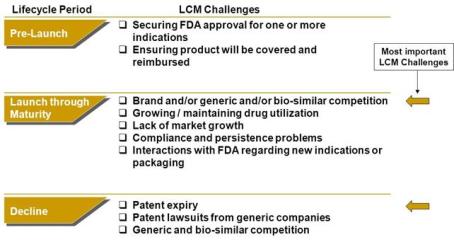Posts tagged ‘return on investment’
Pharmaceutical Lifecycle Management Prior to Healthcare Reform
hen selecting LCM strategies to pursue, pharmaceutical marketers will examine the strategies impact on return on investment (ROI). An LCM strategy’s impact on the following aspects of a drug’s position will determine its ROI. For example, the greater an LCM strategy’s impact on market share, the greater the ROI.
- Most important factors – An LCM strategy’s impact on a drug’s:
- Market size
- Differentiation from competing drugs
- Duration of patent life
- Size of the target patient population
- Physician, patient and payer preferences between competing drugs
- Drug portfolio revenue (in contrast to the individual drug’s revenue)
- Somewhat less important factors – An LCM strategy’s impact on a drug’s:
- Rate of therapy compliance
- Level of formulary access or medical policy restrictions
- Product awareness among physicians, patients and payers
- Manufacturing costs
Even before healthcare reform, there are many strategies that fall under the rubric of lifecycle management. The strategy that offers the greatest potential impact on ROI, by far, is a new indication. A new indication will increase the size of the target market by expanding into a new target patient population. It also could increase the size of the target market within the current patient population if a sub-segment suffers from both the current indication and the new indication. A new indication could potentially differentiate the drug from its competitors, affect patient, physician and payer preferences and create synergies with other drugs in the manufacturer’s drug portfolio.
However, a new indication is also the riskiest strategy. Conducting the clinical trials required to earn a new indication is a costly endeavor. However, only a small percentage of new indications receive marketing approval from the Food and Drug Administration.
Examples of other LCM strategies include new formulations, new delivery devices for injectable drugs, publication strategies, new pricing and contracting strategies or line extensions. These strategies are less costly and risky than seeking to earn FDA approval of a new indication. However, the potential ROI also is much less.
As we will demonstrate in future blog posts, healthcare reform offers drug companies many new levers to pull to increase ROI. These new opportunities will bear fruit for those who manage them appropriately.

